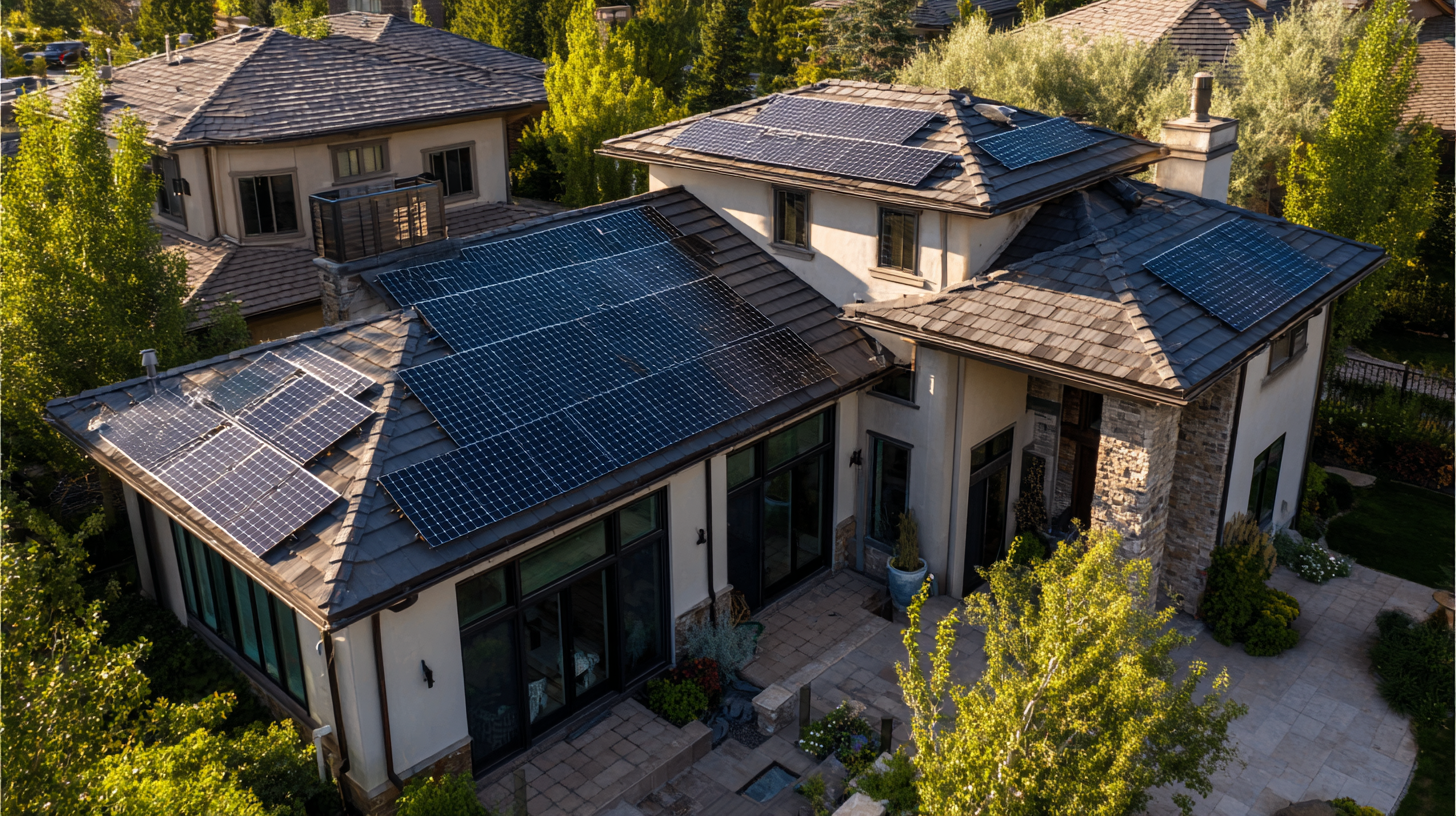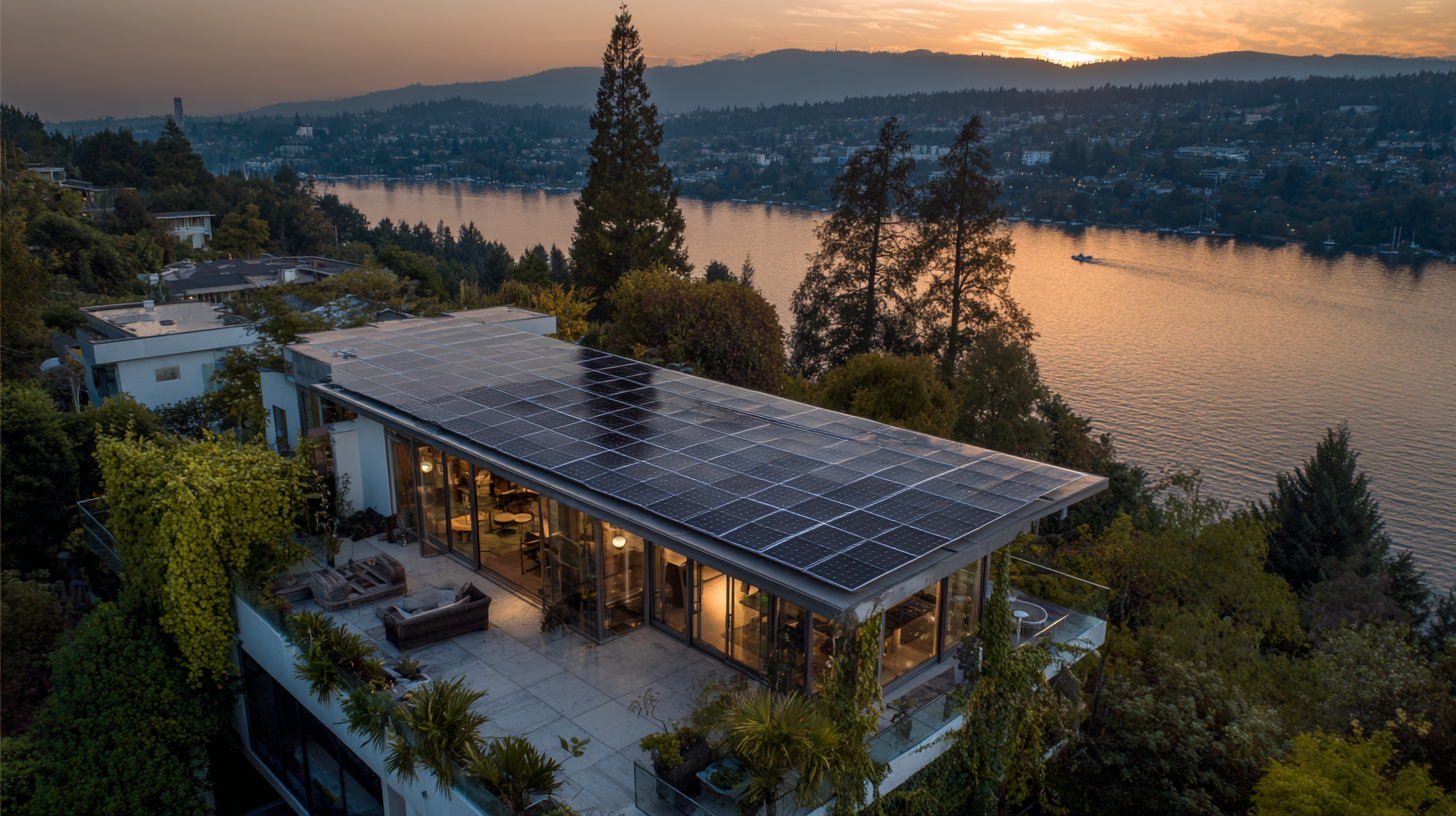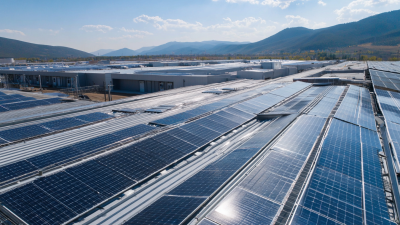MH Energy Your Better Solar and Energy Partner
Leave Your Message
MH Energy Your Better Solar and Energy Partner
As the world increasingly shifts toward sustainable energy solutions, optimizing the efficiency of a Solar Powered System in your home has never been more crucial. According to the U.S. Energy Information Administration, solar energy accounted for approximately 4.3% of total energy consumption in the United States in 2020, and this figure is projected to rise significantly as technology improves and costs decrease. Furthermore, a report by the National Renewable Energy Laboratory indicates that proper installation and maintenance of solar systems can enhance their efficiency by up to 20%. Homeowners who adopt best practices can not only maximize their energy output but also reduce their reliance on fossil fuels, ultimately leading to substantial financial savings and contributing to a cleaner environment. By understanding the intricacies of solar energy utilization, you can harness its full potential and make informed decisions about your energy consumption.

Choosing the right solar panels is crucial for maximizing the efficiency of a solar-powered system in your home. The first step is to assess your energy needs. According to the U.S. Department of Energy, the average American household consumes about 877 kWh per month. By calculating your monthly energy usage, you can determine how much solar power is necessary to supplement or completely meet your needs. For instance, if you use 900 kWh per month, you would need a solar panel system capable of producing this amount, typically requiring around 20-25 solar panels, depending on their wattage.
When selecting solar panels, consider factors such as efficiency ratings and warranty periods. Recent data from the National Renewable Energy Laboratory indicates that high-efficiency solar panels can convert over 22% of sunlight into electricity, compared to standard panels that average around 15-18% efficiency. Investing in more efficient panels can lead to significant long-term savings and a quicker return on investment. Additionally, many manufacturers offer warranties of 25 years or more, ensuring that your investment is protected and that you will continue to benefit from solar energy for decades to come.
| Solar Panel Type | Efficiency (%) | Average Cost ($/W) | Warranty (Years) | Ideal Installation Location |
|---|---|---|---|---|
| Monocrystalline | 15-22% | $0.70 - $1.20 | 25 | Open areas & rooftops |
| Polycrystalline | 15-20% | $0.60 - $0.90 | 25 | Open areas & rooftops |
| Thin-film | 10-13% | $0.50 - $0.80 | 10-15 | Shaded or humid locations |
| Bifacial | 15-22% | $0.80 - $1.30 | 25 | Open areas with ground reflection |
To maximize the efficiency of a solar-powered system in your home, optimizing solar panel placement is crucial. Strategic placement can dramatically enhance the amount of sunlight captured, translating into higher energy output. For instance, studies show that optimizing the angle and direction of solar panels can improve their efficiency by up to 25%. In regions with ample sunlight, like those highlighted in recent developments around clean energy projects, this efficiency leap is essential for increasing energy independence while lowering household energy costs.
**Tips:** When positioning your solar panels, consider factors such as the layout of your roof, surrounding structures, and geographical location. South-facing panels usually receive the most sunlight throughout the day, ensuring greater energy generation. Moreover, tilt angles can be adjusted based on seasonal variations; a steeper angle during winter can capture more sunlight, while a flatter angle is ideal in summer.
Maintenance also plays a vital role in sustaining optimal performance. Regularly cleaning your panels and ensuring there are no obstructions like overhanging branches can help maintain energy output. Additionally, consider investing in smart technologies that monitor and adjust your energy use based on real-time solar production, maximizing both efficiency and savings in your home.
Integrating energy storage solutions into a solar-powered system is essential for maximizing efficiency and ensuring a consistent power supply. By incorporating battery storage, homeowners can capture surplus energy generated during peak sunlight hours. This stored energy can then be utilized during periods of low sunlight or high demand, effectively reducing reliance on the grid and decreasing electricity bills.
Moreover, advanced technologies like lithium-ion batteries provide enhanced durability and performance compared to traditional lead-acid batteries. This not only increases the overall efficiency of the solar energy system but also allows for better management of energy resources. Homeowners can use smart home technology to monitor and optimize their energy consumption, ensuring that stored energy is used when it is most beneficial, such as during peak pricing hours. Ultimately, integrating energy storage with solar systems can lead to increased energy independence and sustainability for households.
Implementing smart home technologies can significantly enhance the efficiency of a solar-powered system in your home. By integrating devices such as smart thermostats, energy monitors, and automated lighting, homeowners can gain real-time insights into their energy consumption. For instance, a smart thermostat can adjust the heating and cooling settings based on when you’re home or away, ensuring that energy isn’t wasted. Additionally, energy monitors provide data on usage patterns, helping homeowners identify peak consumption times and adjust usage accordingly to maximize solar energy utilization.

Another advantage of smart technology is the ability to automate and schedule appliances, ensuring they operate when solar energy is most abundant, typically during the day. Smart plugs and timers can facilitate this by allowing users to set devices on a schedule or operate them remotely. For example, running dishwashers or laundry machines during daylight hours can lead to better energy efficiency and lower electricity bills. Collectively, these technologies not only help in monitoring energy usage but also empower homeowners to make informed decisions that enhance the overall performance of their solar power systems.
Regular maintenance is essential for ensuring the longevity and efficiency of your solar-powered system. According to a report by the National Renewable Energy Laboratory (NREL), regular upkeep can increase the lifespan of solar panels by up to 25%, while also enhancing their energy output. This means that investing time in maintenance is not only beneficial for the environment, but it also maximizes your return on investment.
One key tip for maintaining your solar system is to keep the panels clean. Dust, leaves, and other debris can obstruct sunlight and reduce efficiency significantly. A study indicated that dirty panels can lose as much as 20-30% of their energy production. It's recommended to check for dirt accumulation every few months and clean them with a soft brush or a gentle water spray, ensuring safe practices and avoiding damage.
Additionally, monitoring the performance of your solar system is crucial. Utilize monitoring tools and apps to track your energy generation and identify any performance issues. The Solar Energy Industries Association (SEIA) suggests that anomalies in production should be addressed immediately, as they might indicate underlying problems that could lead to costly repairs if neglected. Regular inspections by qualified professionals can also help detect any potential issues before they escalate, ensuring your solar system runs efficiently for years to come.







